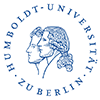Terraforming “Beautiful China”: Island Building and Lunar Exploration in the Making of the Chinese State
Authors
-
Laurence Bashford
Columbia University
PhD student in performance studies and cultural anthropology at Columbia University
-
Jonathan Galka
Harvard University
Doctoral candidate in the Department of History of Science, Harvard University
Chinese terraforming projects in the South China Sea have been condemned as geopolitically and ecologically destabilising. Following years of escalating construction and tourism initiatives, China pivoted in January 2019 by announcing ecosystem restoration efforts on several terraformed islands. Days later, the Chinese National Space Agency made the first soft landing on the far side of the moon, carrying with it a micro-ecosystem of living seeds and insect eggs. The micro-ecosystem sprouted the first plant on the moon, whose brief lifespan was met with rapt attention by the Chinese public as it disseminated across the national mediascape. This article contends that terraforming efforts in the South China Sea and the Chang’e 4 lunar biosphere project are related material-symbolic instantiations of a uniquely Chinese sociotechnical imaginary. Prevailing interpretations of Chinese island-building, outer space ventures and ecological civilisation tend to construe Beijing’s intentions as primarily antagonistic. These accounts are useful yet insufficient for comprehending China’s terraforming projects on Earth and beyond. The authors instead refigure terraformation as an imaginative, material and bio-geophysical process enacted in the globalising pursuit of new Chinese horizons.
Copyright (c) 2022 Laurence Bashford, Jonathan Galka

This work is licensed under a Creative Commons Attribution-NonCommercial-NoDerivatives 4.0 International License.
Copyright (c) 2022 Laurence Bashford, Jonathan Galka

This work is licensed under a Creative Commons Attribution-NonCommercial-NoDerivatives 4.0 International License.




